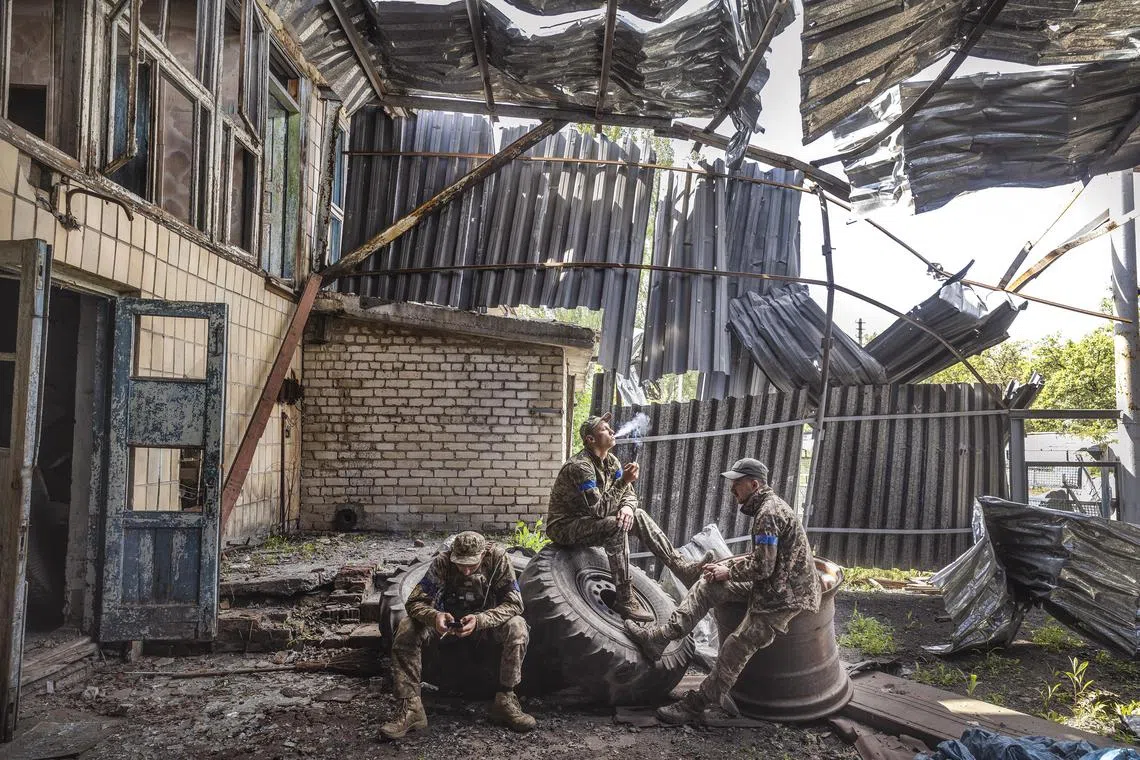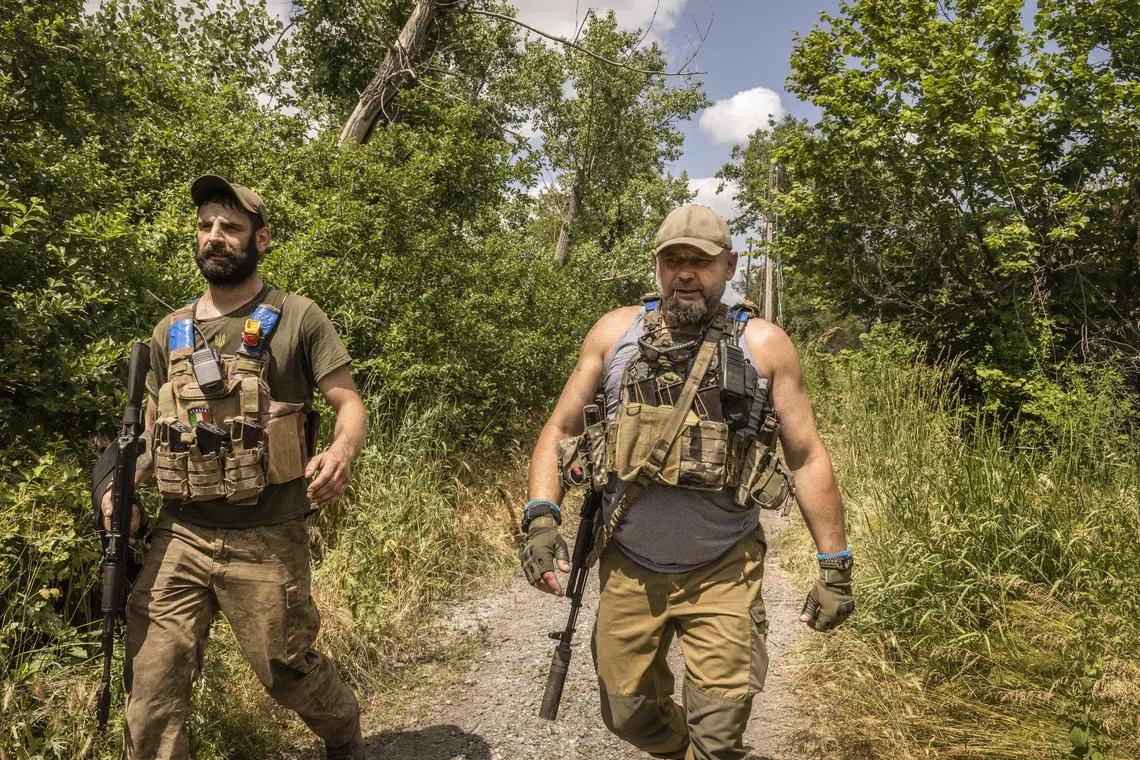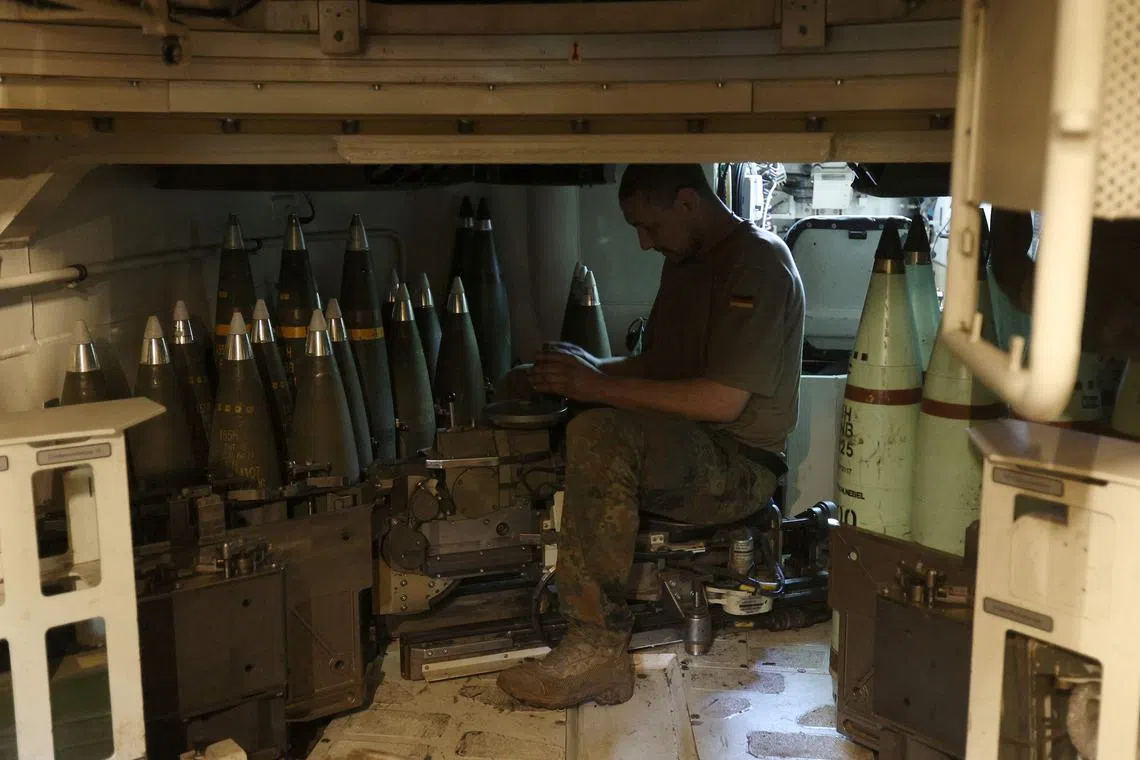Ukrainian forces readying for breakthrough bid, say analysts
Sign up now: Get ST's newsletters delivered to your inbox

Soldiers from Ukraine’s 68th Brigade resting inside a destroyed and abandoned building on the outskirts of the recently-reclaimed village of Blahodatne.
PHOTO: NYTIMES
Follow topic:
PARIS - The beginning of Ukraine’s counter-offensive against the Russian invasion has revealed little about Kyiv’s wider tactical plans, but Ukrainian forces are ready to exploit the slightest cracks in Russian defences, say analysts.
Kyiv’s military launched its offensive in the east and south of the country, asserting it is “moving forward” while Russia claims Ukraine has suffered “catastrophic” losses.
“We are definitely seeing a lot of tactical deception operations and can expect additional and larger such operations as the campaign progresses,” said Mr Dylan Lee Lehrke, an analyst with the British security intelligence firm Janes.
“That is one of the primary benefits of being on the attack – you have the ability to choose the time and place to your advantage while keeping the adversary guessing.”
Available information shows that Kyiv has not thrown all of its forces into battle.
At the front, there are 13 mechanised, two armoured and three paratrooper brigades, along with mobile air assault forces, according to Mr Pierre Razoux, academic director of the Mediterranean Foundation for Strategic Studies.
That is just 15 per cent of its army, involving 3,000 men per brigade.
The forces are “ready to rush towards the next possible breakthrough”, he said.
These multiple but minor assaults are designed to test Russia’s resilience.
Tactics
But the fight will be complicated.
“The total units in the struggle – infantry, reconnaissance, armoured, mechanised, paratroopers – are 75 brigades for the Ukrainians, and 65 for the Russians in Ukraine and near the border,” Mr Razoux said.
“The difference isn’t huge.”
Kyiv’s objectives for the assaults so far are not clear.
It is likely that Kyiv is targeting cities occupied by Russia like Melitopol and Tokmak in the south, and even Luhansk in the east, according to Mr Ivan Klyszcz, a researcher for the International Centre for Defence and Security in Estonia.
“Operational hubs under Russian occupation such as these are likely a key objective of the ongoing counter-offensive,” he said.
Other targets could be Crimea, occupied by Russia since 2014, and Donbas in the east, which is largely under Russian control today. Both are politically significant and would be militarily ambitious fronts.

Soldiers from Ukraine’s 68th Brigade moving through the destroyed village of Blahodatne, Ukraine.
PHOTO: NYTIMES
Looking at Crimea, “they can take it, but it’s not worth the pain” and could be detrimental to their overall military efforts, said Mr Alexander Grinberg with the Jerusalem Institute for Strategy and Security.
“The declared objective is the liberation of the Donbas. But what are the operational plans? It’s impossible to know.”
Operations in the north are unlikely, and in the south, strategic access through the Sea of Azov is blocked by Moscow.
Mr Razoux said regaining ground in Donbas would be politically symbolic, but would have no strategic purpose militarily – unless the objective was to pull Russian troops to the area before launching an offensive in the direction of the Sea of Azov.
Clock ticking
Regaining control of part of the Sea of Azov could isolate Crimea and threaten 80 per cent of Russia’s maritime trade, he added.
But the Russian forces have been preparing for months for Ukraine’s offensive. A line of defence is in place extending 800km, with a large number of soldiers to hold it.
“Russian defence is organised in layers. It’s not sophisticated: the adversary must overcome its obstacles, one after another,” Mr Grinberg said.
“The Ukrainians can break through, but not force this mass of Russian units to collapse.”

A Ukrainian serviceman of the 43rd Artillery Brigade prepares to fire towards Russian positions, near Bakhmut, in Ukraine’s Donetsk region.
PHOTO: AFP
The Soufan Centre, a New York-based security think-tank, has said that the window for the counter-offensive to succeed is “limited, at best”.
After 16 months of war, President Volodymyr Zelensky must prove his ability to push Moscow back to show the value of Western military aid and encourage allies to send more.
Mr Klyszcz said said that Kyiv “wants to deliver a substantial ‘win’ to demonstrate its ability to fight to both its population and Western partners”.
“They do aim to liberate all occupied territory as soon as possible.”
The Soufan Centre said there would be “serious questions” about the willingness of Western countries to continue supporting Ukraine militarily at current levels if the counter-offensive stalls.
The Kremlin’s strategy is to buy time, wear out its opponent and hope for the election of Donald Trump as United States president in November 2024 “because he is disinterested in Ukraine”, Mr Razoux said.
From then on, the Kremlin would “hope that a weary Europe will divide over the conflict”. AFP

